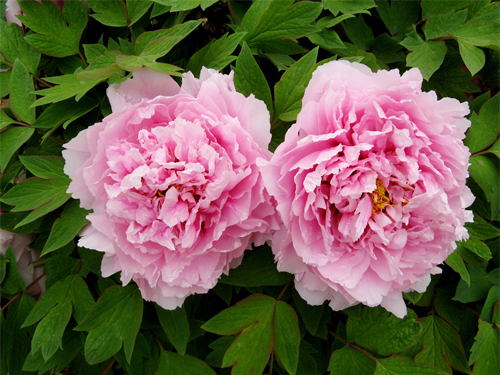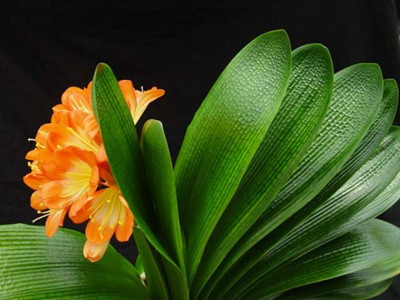Autumn maintenance of Paphiopedilum
Paphiopedilum is a member of the Magnolia family, but there are also many varieties born and raised in China. The most convenient thing for families to cultivate Paphiopedilum is that it does not need a special requirement for temperature and can grow normally at room temperature above 5 degrees Celsius.
After the high temperature in the hot summer, Paphiopedilum wakes up from dormancy and enters the normal growth period. If you want to make Paphiopedilum blossom in the normal flowering period, autumn maintenance is very important.
Autumn is the key period for Paphiopedilum to absorb nutrients and give birth to buds. According to the author's observation for many years, it is found that the budding time of some Aristolochia such as Aristolochia is basically synchronized with that of autumn chrysanthemum, and the bud of Aristolochia can be seen protruding from the leaves around September 20 every year. Although the bud and florescence are different due to different varieties of Paphiopedilum, topdressing fertilizer and careful maintenance of all kinds of Paphiopedilum in autumn are synchronous.
The specific practices are as follows:
1. Before the first fertilization, loosen the potted soil slightly with a fine stick, but do not hurt the roots.
2. Liquid fertilizer with the same proportion of nitrogen, phosphorus and potassium should be applied every week, which should be thin rather than concentrated. For example, the application of granular fertilizer with nitrogen, phosphorus and potassium can be reduced to once every semimonthly.
3. Foliar topdressing was carried out on the leaves every 10 days and sprayed with 0.2% potassium hydrogen phosphate to stop when the buds came out of the leaves.
4. Pay attention to waterlogging prevention. Paphiopedilum is a shallow root plant, the basin soil is too wet, it is easy to cause rotting root phenomenon.

5. Let the potted flowers of Paphiopedilum be raised by hanging, which is beneficial to the ventilation of the potted soil and the stretching of the leaves of the plant.
6. When the temperature reaches about 25 degrees Celsius, the plants of Paphiopedilum should be exposed to light as much as possible. And often turn the basin, so that all the plants can receive light, so that it can be conducive to the gestation of multiple buds of all plants in the basin.
7. In late autumn, when the outdoor temperature is below 10 degrees Celsius. Potted flowers should enter the house in time to avoid the harm caused by cold wind and frost to the plants of Paphiopedilum.
Autumn maintenance of Paphiopedilum
Autumn maintenance of Paphiopedilum
Fertilizer application
The first time to apply fertilizer, you should use a fine wooden stick to loosen the basin soil slightly, but do not hurt the roots. Apply liquid fertilizer once a week, not too thick, at least once every half a month. The leaves are fertilized every 10 days or so and sprayed with 0.2% of potassium dihydrogen phosphate, which can be stopped as soon as the buds come out of the leaves.
Waterlogging prevention and ventilation
Pay attention to waterlogging prevention, Aristolochia is a shallow root plant, because the basin soil is too wet, it is easy to cause rotting roots. Let Paphiopedilum be suspended, which is conducive to the ventilation of the basin soil and the stretching of the leaves of the plant.
Replenish light and control temperature
When the temperature reaches about 25 ℃, the plants of Paphiopedilum should be exposed to light as much as possible. At the same time, attention should be paid to turning the basin so that all the plants receive light, which is conducive to the gestation of multiple buds of all plants in the basin.
In late autumn, when the outdoor temperature is below 10 ℃. It is necessary to put the potted flowers indoors in time to avoid the attack of cold wind, and the frost will cause a lot of damage to Paphiopedilum.
Autumn maintenance skills of potted flower Paphiopedilum
Autumn maintenance skills of potted flowers Paphiopedilum (Cypripedium corrugatum Franch.), also known as slipper orchid. Perennial herbs of Orchidaceae. Most of them are terrestrial species, and there are many hybrid varieties. It is one of the most popular cultivated orchids. Mainly distributed under tropical and subtropical forests of Asia. Like a warm, humid and semi-overcast environment. Stem very short; leaf blade banded or oblong-lanceolate, green or with reddish brown markings. The flower is very strange, the lip is pocket-shaped; the dorsal calyx is very developed, with a variety of gorgeous patterns; two lateral calyx are born together; the petals are thicker, the flower life is long, and some can bloom for more than 6 weeks, and there are flowering species in all seasons. Autumn maintenance skills of Paphiopedilum (1) compared with summer, not only the sunshine time in autumn is shorter, but also the sunlight is weaker, if two layers of shading net are still used, the original sunlight will be insufficient, so it is necessary to remove one layer and keep 50% shading. Western sun is easy to cause leaf burns, so Western sunshine should still be avoided. Ventilation should still be maintained, and windows around the greenhouse should be closed in late autumn if the temperature is low at night. (2) watering is generally carried out until the surface of the plant is dry. As it has entered a growth standstill period, its absorption of water is far lower than that in summer. Therefore, it is usually watered every 2-3 days. As the air is dry this season, the surface of the plant is easy to dry. There is often a phenomenon that when the surface of the plant is dry, the inner layer is still very wet, so watering should not be too wet. It should also be noted that the orchid heart is prone to stagnant water and cause flower buds to rot. Therefore, special attention should be paid to watering orchid plants with flower buds. (3) the fertilizer is the same as in summer, liquid fertilizer is applied 2 or 3 times a month, but for flowering plants, fertilization is suspended. (4) removal of old leaves when growth ends this year, the leaves grown in the first two years are about to wither. This is not morbid, but an aging phenomenon, as long as it is carefully removed or subtracted from the rhizosphere. (5) when weeding is cultivated in urban areas, there is no such problem. In suburban or pastoral cultivation, weed seeds are often flying and sprouting everywhere, causing great trouble. So in early and late autumn, it is very difficult to uproot weeds, once they are allowed to grow and then to get rid of them.
- Prev

Planting techniques of Peony Flower
The propagation of peony flowers can be done by sowing method, split method and grafting method. However, the sowing method has been used for too long, and it is difficult to grow smoothly after germination, so most of them adopt the split-plant method. Let's make a perfect analysis of the planting techniques and methods of peonies, hoping that friends who love flowers can use them.
- Next

Criteria for evaluation of Clivia
Over the years, people in the purchase of high-grade Clivia, more than the merits of the leaves to decide whether to choose, basically do not consider flowers and other conditions. Therefore, the evaluation standard of Clivia is of course based on leaves. To sum up, there are mainly + articles
Related
- Fuxing push coffee new agricultural production and marketing class: lack of small-scale processing plants
- Jujube rice field leisure farm deep ploughing Yilan for five years to create a space for organic food and play
- Nongyu Farm-A trial of organic papaya for brave women with advanced technology
- Four points for attention in the prevention and control of diseases and insect pests of edible fungi
- How to add nutrient solution to Edible Fungi
- Is there any good way to control edible fungus mites?
- Open Inoculation Technology of Edible Fungi
- Is there any clever way to use fertilizer for edible fungus in winter?
- What agents are used to kill the pathogens of edible fungi in the mushroom shed?
- Rapid drying of Edible Fungi

